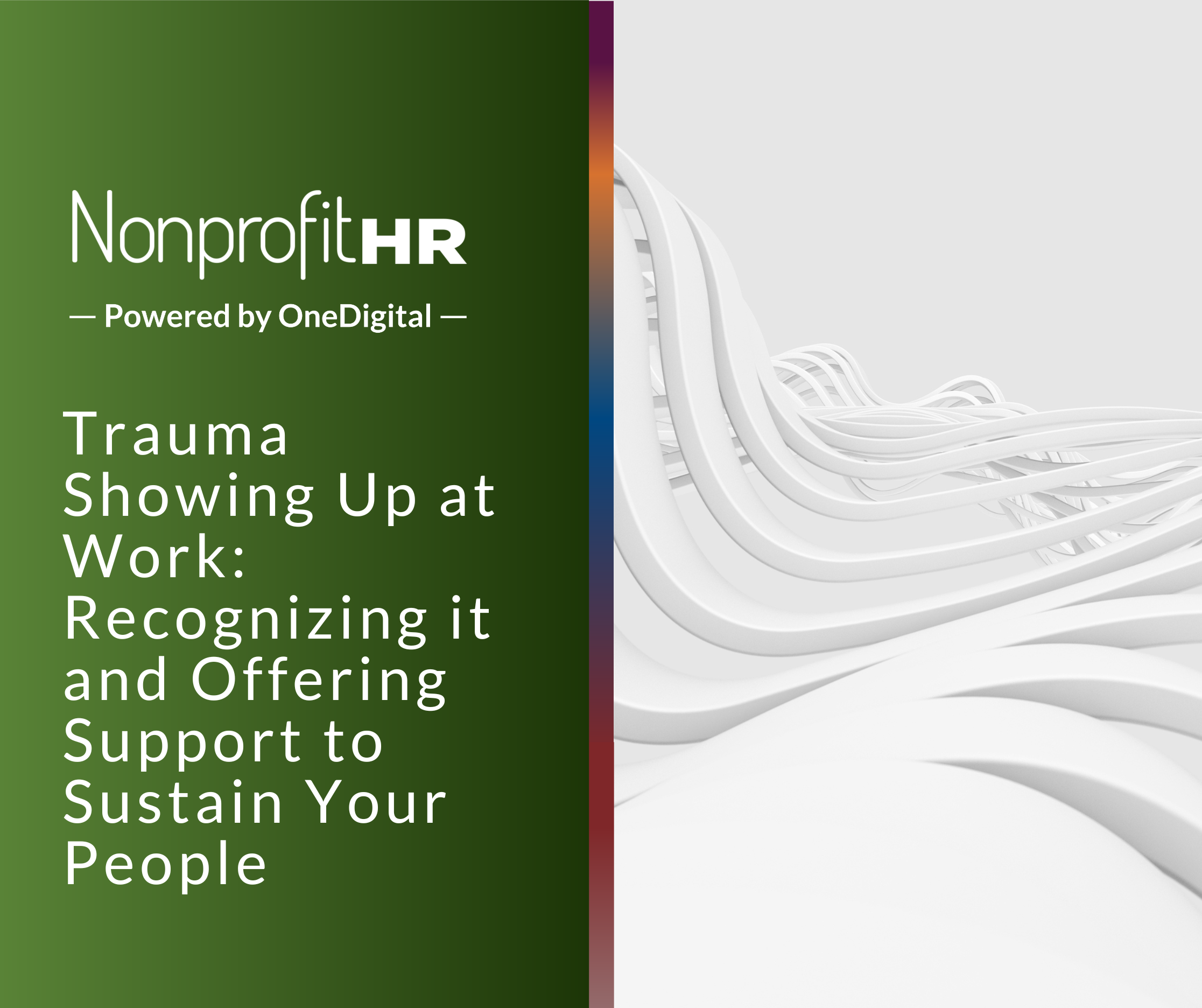WTOP: 5 ways nonprofits can…

Is It Dead or Alive?
Let me explain. Has your handbook not been updated in over three years? Are your employees confused as to where to find the handbook? Are they reaching out to managers or peers when searching for operational or compliance policies contained within the handbook? Are your policies inconsistent with what federal, state and local municipalities are requiring minimally? Are your policies not aligned with your practices? Then your handbook may be considered a “dead” document. Your handbook should be considered a living document. The issues with having a “dead” document for a handbook can be numerous! They can include some of the following:
- It is not legally compliant as many state and local policies have been updated in the past three years… Some even in the past six months! This can lead to an increase in liability and potential litigation.
- It is inconsistent with how you operate across the organization and there is a lack of clarity on how employees are expected to conduct themselves.
- Vague policies and procedures can lead to inequitable practices and unclear or unrealistic expectations, making it difficult to manage performance.
- Employees become disengaged and unmotivated because they are always operating in uncertainty and confusion, which can also lead to poor work culture and retention issues.
Compliance
A well-written and legally compliant handbook should consist of the following:
- A statement on the at-will nature of work (per state requirements).
- Federal, state, local and municipal policies, as applicable.
- Policies regarding wages and hours as required by applicable federal, state and local laws.
- Definition of who the handbook applies to — be cautious not to treat your consultants and contractors, who regularly support your organization, as employees!
- A discrimination and harassment policy with provisions that covers protected categories by applicable, federal, state and local laws.
While the list above may not be all inclusive, consider engaging with legal counsel to review your handbook as updates are made to ensure that your policies are compliant!
When Should Your Organization Update Their Handbook?
The best practice is for organizations to review their handbook at least annually, if not more often. Employee handbooks are not a one-size-fits-all. The number of employees your organization has will dictate the federal, state and local policies that may apply. If your organization employs staff in multiple states, it is essential that you keep up to date with compliance in each of those states. Updating the handbook solely as it applies to your headquarters location is not enough to ensure that your organization is being compliant. This may seem tedious, but it is important as state and local laws and legislation may change often.
Consider engaging your human resource(s) or leadership team members in an internal review cadence that feels right for your organization. This internal review team should be paying special attention to the threshold for the states where employees reside, have a pulse on the number of employees within those states, and the number of employees within the organization to determine the applicability to federal laws.
Culture
As part of your robust onboarding program, your new employee should review the handbook within their first 30 days! As they review your handbook, they should be reading about your organization’s mission or purpose, values and vision. To establish a sense of belonging, your employee’s personal values should align not only with your organization’s values, but with your mission. If their values align with your mission, it can provide a greater sense of purpose, which will keep them engaged and motivated to perform to their best abilities. Also consider the tone in which your handbook is written. Make sure that it is positive and easily understood!
Diversity, Equity, Inclusion and Justice
Commitment to diversity, equity, inclusion and justice is a critical component of your employee handbook. It ensures that employees are aware that this is a priority for your organization, and it involves all employees, at every level. First, organizations should understand the current state of EDIJ within the workspace (whether in-person or virtual). Are individuals disproportionately impacted by existing organizational policies? How will the organization demonstrate its commitment to people with disabilities, promote gender diversity and lift barriers that negatively affect underrepresented communities? Once these questions are answered, organizations will be better able to champion EDIJ through operations, policies and/or initiatives and then share that commitment in the employee handbook.
We’ve Updated Our Handbook, Now What?
It’s time to communicate! It is crucial that it is shared, and the changes are communicated promptly within the organization. Employers should consider promptly communicating the importance and the “why.” While communicating changes, this is the opportunity to reiterate expectations. Ensure that a copy of the most current handbook is shared and ensure that employees know where they can access the handbook — either on a shared drive or with the use of HRIS tools.
Are you prepared to have better decision making processes, engaged employees and higher retention? Reach out to our Strategy & Advisory practice. We can engage in effective conversations to understand where you are in your handbook journey.
Author
 |
Suana Watson, MS, SHRM-CP
Consultant, Strategy & Advisory
|





























